Trump-Harris Debate Text Analysis Report
Welcome to the text analysis report for the debate between DONALD TRUMP and KAMALA HARRIS at the The National Constitution Center in Philadelphia, PA held on September 10, 2024. This report offers a comprehensive breakdown of speaking time distribution, extractive summarization, sentiment analysis, similarity calculations between the candidates and moderators, word clouds for each candidate, entity recognition, and trigrams. It is based on a transcript of the debate provided by ABC News. The report is provided by Vector Shock AI.
Speaking Time Distribution
This section displays the percentage of time each candidate spoke during the debate. It helps visualize how speaking time was distributed between the participants and moderators.
| Participant | Percentage (%) |
|---|---|
| DONALD TRUMP | 48.88% |
| KAMALA HARRIS | 37.16% |
| Moderators | 13.96% |
Extractive Summary
In this section, we provide a concise summary for each candidate using extractive summariztion. This technique selects the most important sentences from the debate based on word frequencies and relevance, offering a quick overview of the main points each candidate discussed.
DONALD TRUMP
But when you look at what she's done to our country and when you look at these millions and millions of people that are pouring into our country monthly where it's I believe 21 million people, not the 15 that people say, and I think it's a lot higher than the 21. They're the ones -- and she's the one that caused it, that's weak on national security by allowing every nation last month for the year, 168 different countries sending people into our country. I decided -- and I told my people, the top people, and they're very good people -- I have a lot of good people in this -- that administration. So, she just started by saying she's going to do this, she's going to do that, she's going to do all these wonderful things. It's going to make people want to be able to go and work and create jobs and create a lot of good, solid money for our -- for our country.
KAMALA HARRIS
I think it's – I mean honestly, I think it's a tragedy that we have someone who wants to be president who has consistently over the course of his career attempted to use race to divide the American people. And I'm going to actually do something really unusual and I'm going to invite you to attend one of Donald Trump's rallies because it's a really interesting thing to watch. He invited trade wars, you wanna talk about his deal with China what he ended up doing is under Donald Trump's presidency he ended up selling American chips to China to help them improve and modernize their military basically sold us out when a policy about China should be in making sure the United States of America wins the competition for the 21st century. Let's remember that when it came to the Proud Boys, a militia, the president said, the former president said, "Stand back and stand by." Economists have said that Trump's sales tax would actually result for middle-class families in about $4,000 more a year because of his policies and his ideas about what should be the backs of middle-class people paying for tax cuts for billionaires.
Word Clouds
Word clouds provide visual representation of the most frequently used words by each candidate. The larger the word, the more often it was used, helping to quickly identify key topics or terms mentioned by each candidate.
DONALD TRUMP
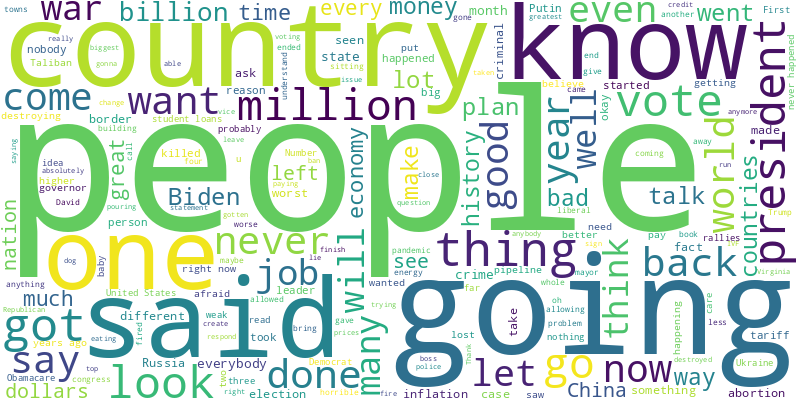
KAMALA HARRIS
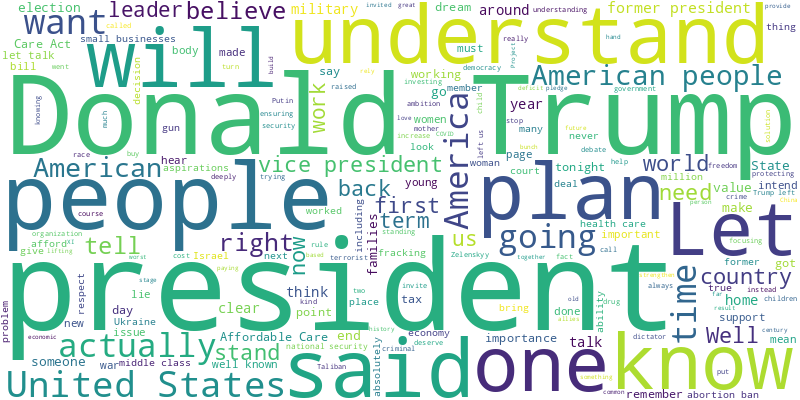
Sentiment Over Time
This section tracks the sentiment (positive, neutral, or negative) of each candidate's speech as the debate progresses. The sentiment is calculated based on the polarity of their statements during their turns to speak.
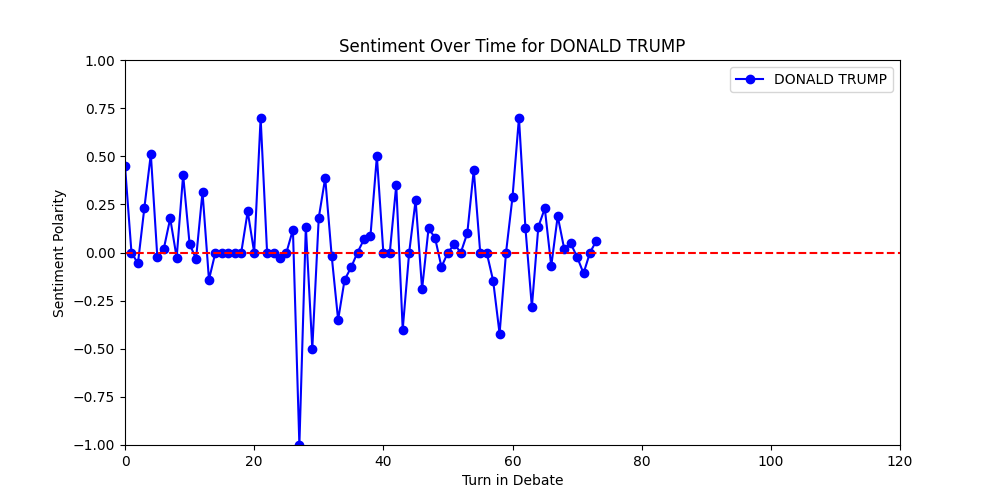
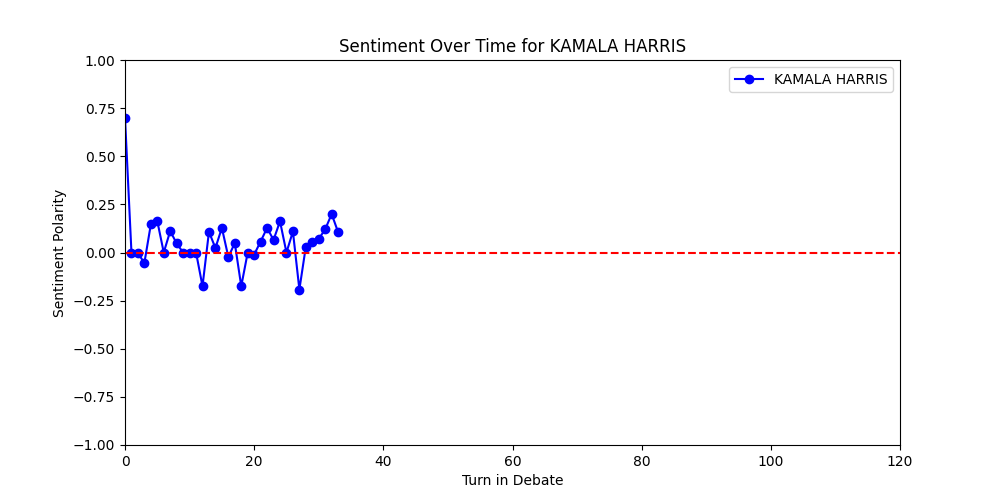
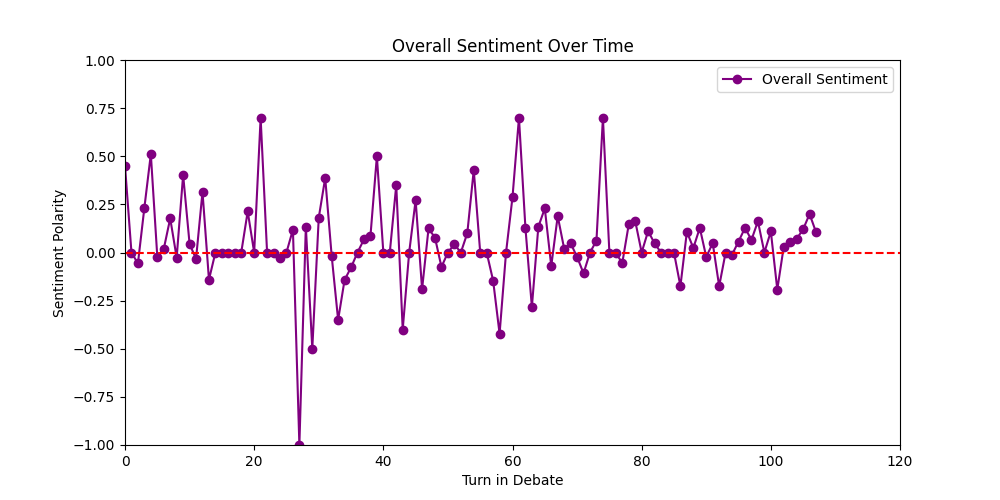
Cosine Similarity Over Time
Cosine Similarity Over Time measures how similar the language used by two candidates or between candidates and moderators is throughout the debate. It ranges from -1 to 1, where: 1 indicates that the language or topics are exactly alike at that point in time, 0 means there is no similarity, and -1 indicates complete dissimilarity.
By tracking this over the course of the debate, you can observe where candidates aligned or diverged in their arguments and language choices. Peaks suggest agreement or overlap in topics, while troughs indicate moments of contrasting positions or focus.
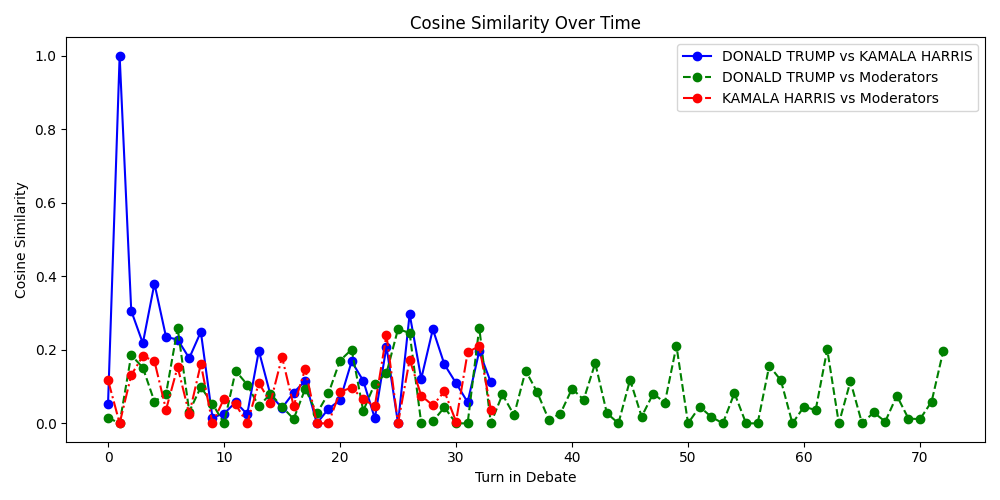
Named Entity Frequency
Named Entity Recognition (NER) identifies key entities such as people, organizations, locations, and events mentioned during the debate. By counting the frequency of these entities, NER helps highlight the topics and figures most central to each candidate's arguments. Higher frequencies indicate greater focus on those specific entities during the debate.
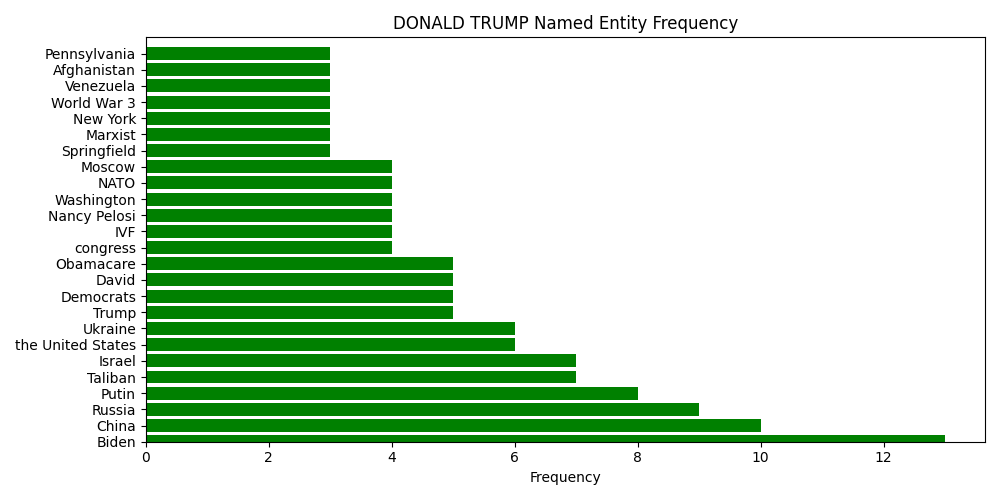
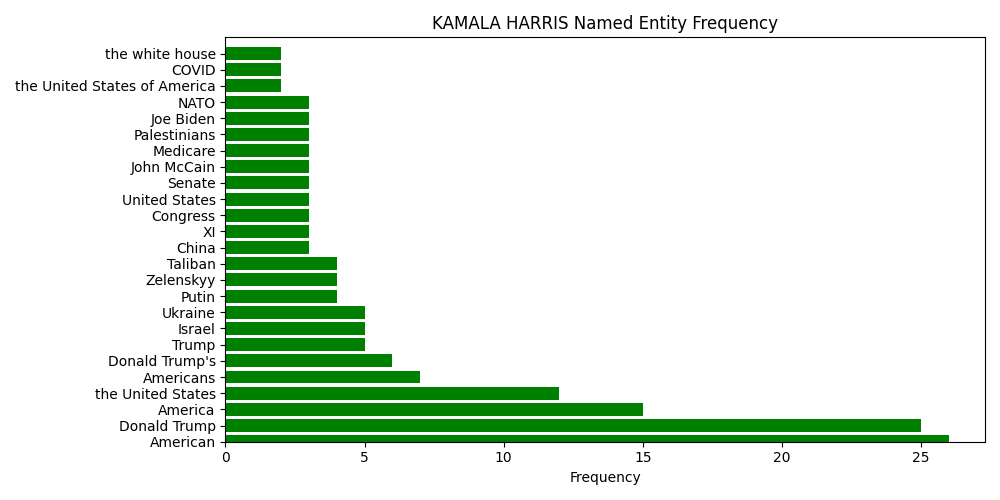
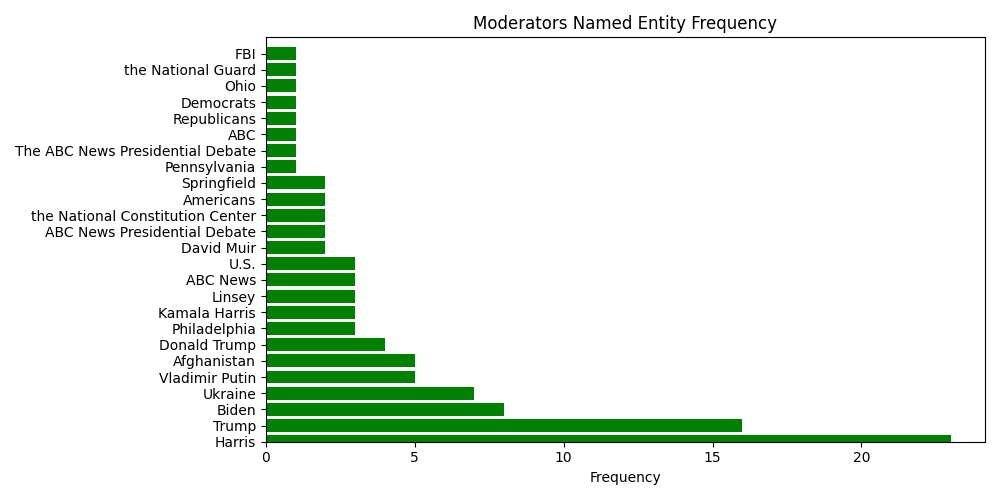
Ngrams (Word Combinations)
Ngrams refer to combinations of words that commonly appear together. A unigram represents a single word, a bigram represents a two-word phrase, and a trigram represents a three-word phrase. Analyzing ngrams helps reveal key phrases or terms that candidates repeatedly use, offering insights into their primary themes, talking points, and rhetorical strategies during the debate.
DONALD TRUMP
- would never happened: 4
- people pouring country: 3
- nobody thought possible: 3
- hundreds billions dollars: 3
- millions millions people: 3
- even come close: 3
- millions people come: 3
- every one cases: 3
- people going prosecuted: 3
- 14 million votes: 3
KAMALA HARRIS
- president united states: 8
- affordable care act: 7
- donald trump left: 4
- trump left us: 4
- left us worst: 3
- much common separates: 3
- common separates us: 3
- donald trump plan: 3
- let understand got: 3
- protections roe wade: 3